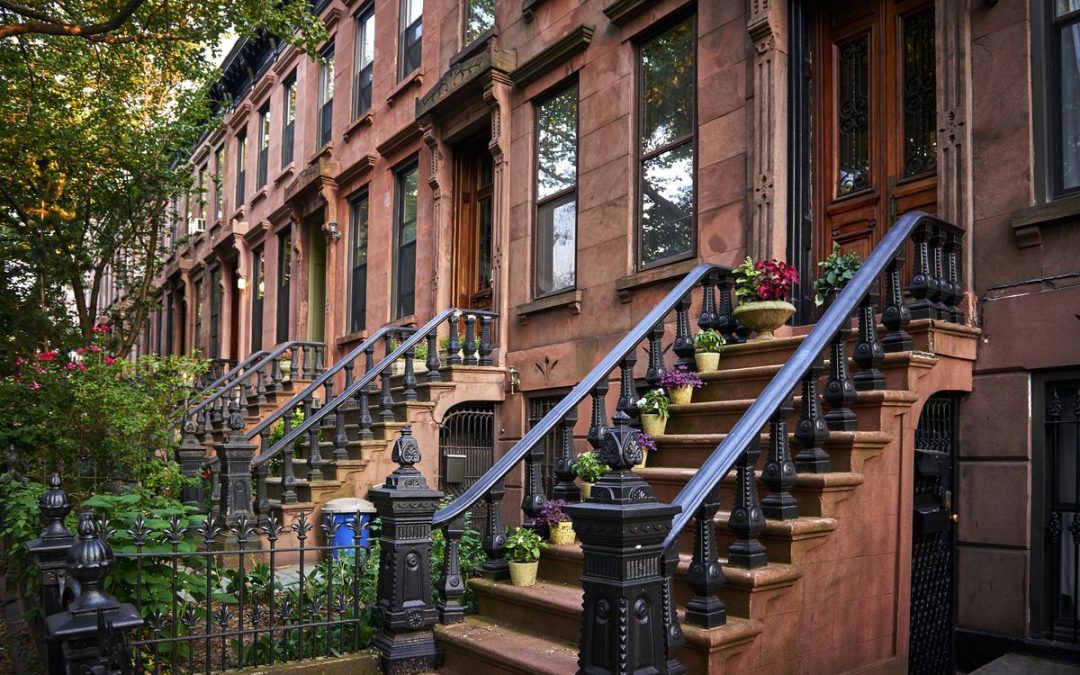When you are shopping around for your first home, you are likely to hear about a lot of different types of houses that you might consider. If you live in the New York City Upper West Side area, one of those types of houses is a brownstone house. A distinctive feature of brownstones is the softness of their architecture, which enhances the ease in which they can be shaped into different styles while still keeping their distinctive features like hardwood flooring.
Advantages of Hardwood Flooring in Upper West Side
The front stoop is one of the main features of an NYC brownstone house that distinguishes it from others. These stoops were built for function, not fashion; they were intended to make the parlor, or entrance, floor much higher than street level, which was, at that time, filled with horse dung. Building these stoops helped keep the parlor hardwood floor clean.
Brownstone and townhouses are often used interchangeably, but they are different. A townhouse is a tall narrow single-family residential structure that has at least two floors. Townhouses also share a common wall with the adjacent townhouse. Townhomes are built of marble, wood, limestone, or other materials. Brownstones are made from a kind of sandstone that’s composed mainly of small bits of quartz and feldspar combined with clays, iron oxides, calcite or silica. However, if a townhouse has a façade coated with brownstone, it is a brownstone house. Most brownstones have 3 to 4 floors, and all floors are made of hardwood.
The Portland Brownstone Quarry permanently shut down in 2012 after three centuries of being the major supplier of NYC’s fine quality brownstone. As a result, the scarcity of the building material catapulted the value and worth of brownstone houses. Synthetic wall-to-wall carpet became widely available around 1954. And flooring changed forever. Once builders had a cheap and appealing surface, they could toss right over the subfloor in a day, they immediately stopped offering hardwood floors as standard.
Where Did Brownstones Come From?
First and foremost, we should identify and clear up the common misconception that brownstones are always built with brownstones. The reality is only a tiny part of the building may have brown bricks. Brownstone is actually sandstone and too soft to use in building construction. The source of the material that gives brownstone houses their signature look is mainly Portland Brownstone Quarry, previously located in Portland, Connecticut. The building material was transported to New York City via the Connecticut and Hudson Rivers and stored in yards along the Hudson and East Rivers. Although it is called brownstone, it was initially pink in color when the first cut. It turns brown over time.
Why are Brownstone Houses Popular in NYC?
The obsession with brownstone houses in NYC began in the mid-19th century. Romantic classicism triggered Americans’ obsession with brownstone houses, followed by the artistic movements that emphasized the importance of nature. Moreover, during the Industrial Revolution, buildings went up in the city at a feverish pace, largely due to romantic classicism. The movement was a kind of reminder that nature is not only essential but desirable as part of our everyday lives. Improved machinery empowered laborers to work safer, faster, and cheaper, which boosted the construction of brownstones in the city. In short, the brownstone house in NYC was the perfect affordable combination of nature and urbanization. Hardwood floors were present throughout the four levels and on the stairs.
Hardwood Floors in Brownstones
Hardwood floors are in most historic brownstones. If your brownstone was built before 1970s, there is almost always hardwood flooring underneath the faded carpet. Historic home renovations are often more expensive since you need the help of a highly skilled renovator as well as special city permits for altering historical architecture. For example, brownstone owners may encounter:
- Worn or cracked plumbing
- Related water damage and mold
- Knob-and-tube wiring
- Older appliances
- Pest issues
- Leaking roofs
- Outdated insulation
- Damaged hardwood floors
- Old gutter systems
- Costly antique materials like tile and mantelpiece work
- Specialty work like stoop repair
- Outdated or damaged chimneys
Advantages of Hardwood Flooring in Upper West Side
Updating the outside of a brownstone is also quite costly and can run into the high tens of thousands of dollars. Refinishing your existing Hardwood Floors can save you thousands.
Contact us
Schedule a free Consultation https://hudsonfloorgroup.com/service-areas/new-jersey/ Email info@hudsonflooring.com Website https://hudsonfloorgroup.com/about/ Homeowners and business owners get the same high-quality service at Hudson Flooring. We work with architects, designers, builders, and general contractors. Hudson Flooring is a trusted flooring company since 2008. Hudson Floor Group Inc has been a leading provider of residential & commercial flooring products and flooring services including installation, restoration, refinishing, maintenance, and design consultation services to a growing number of loyal customers throughout the Tri-state area especially in Upper West Side NYC. Certifications OSHA, NWFA, and FSC.
Phone 201-644-4400.

